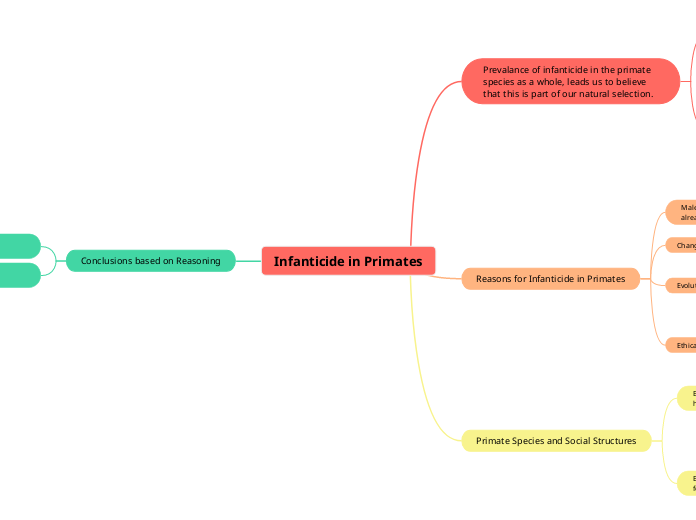Infanticide in Primates
Prevalance of infanticide in the primate species as a whole, leads us to believe that this is part of our natural selection.
Definition: The act observed in certain cultures of intentionally causing the death of newborns shortly after their birth due to various reasons, including societal norms or considerations, often driven by circumstances perceived as rendering the infants undesirable.
Comparison with Other Primate Societies
Observations in fission-fusion societies (e.g., chimps)
Cooperation in raising offspring observed in some primate groups
Examples from other animal species (e.g., ducks) practicing forced procreation
Evolutionary adaptations to cope with forced procreation in certain species
Reasons for Infanticide in Primates
Males' desire to reproduce with females who have already given birth
Resource competition among males
Changes in hierarchy within primate groups
Social pathology and exploitation within primate societies
Evolutionary Perspectives
Evolutionary Perspectives
Ongoing debate: Is infanticide a sign of dysfunction or a normal part of primate groups?
Ethical Considerations
Challenges in balancing research objectives with ethical concerns
The impact of human intervention on natural events in primate groups
Primate Species and Social Structures
Examples of primate species: apes, chimps, humans, baboons, langurs
Emphasis on harem structures (one male, many females)
Infanticide Rates in Harem Structures
The majority of infanticides occur in one-male groups.
Shortening inter-birth period for females in estrus
Evolutionary instinct: increasing chances of passing on male's DNA.
Impact on Females in Harem Structures
Limited options for females to protect their offspring
Strategies employed by females, e.g., mating with multiple males to confuse paternity
Evolutionary adaptations and counter-strategies by females
Conclusions based on Reasoning
Recognition of infanticide as a complex and debated topic
Acknowledgment of the role of evolutionary pressures in shaping primate behavior
